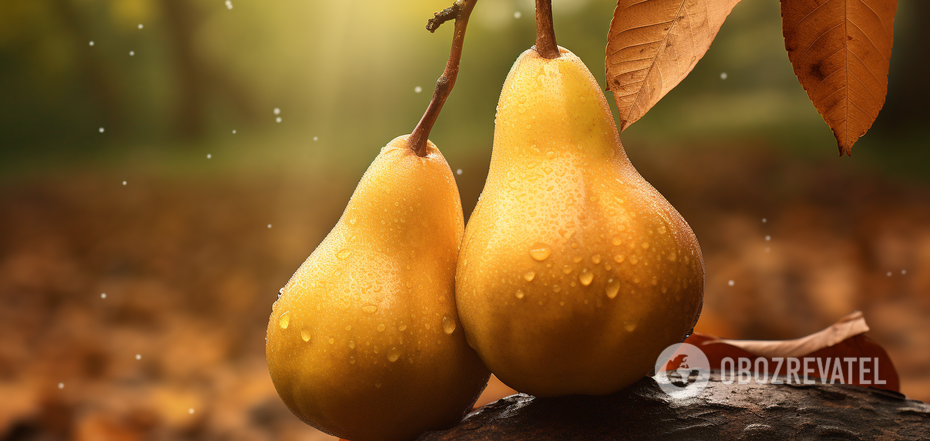Life
What to do with a pear in the fall to increase the yield: tips
The period from the end of fruiting to the onset of cold weather is very important in caring for fruit trees, particularly pears. During this time, you need to have time to prepare them for winter and the onset of the next season. After all, nature lays the buds for the coming summer just before winter.
OBOZREVATEL has collected tips from experienced gardeners on how to care for pears before winter. The basic approach is to take care of the tree's health. It should accumulate strength for the next harvest, and not spend it on confronting external circumstances.
Cleaning
The area around the tree should be cleaned of fallen leaves. After all, infections and pests typical of pears can multiply in it. And this is dangerous - the tree can become infected. That's why the leaves are collected and properly disposed of. For example, they are sent to the compost. But they are never burned. Also, before winter, you need to mechanically clean the pear trunk from lichens and dead bark. This can be done with a stiff brush.
Pruning
You should take care of the tree crown no later than 3 weeks before the start of the night frost period. This time will be enough for the tree to heal the cuts. It also needs to be helped by treating them with special substances.
When pruning, be sure to remove dried, diseased, and broken branches. Use a sharp and disinfected tool to cut them down to healthy tissue. And immediately after that, they are treated with a protective agent.
Fertilizing
The right nutrient application allows the pear to strengthen its resistance to cold weather and build up a reserve for the start of the next season. You can tell which substances a pear needs by the condition of the fruit and leaves. For example, irregularly shaped fruits may indicate the need to feed the plant with bromine, and chlorosis on the leaves may indicate iron. Abnormally fast and abundant leaf fall, in turn, can be a sign of potassium deficiency. If the tree is healthy, it can be fertilized with superphosphate and potassium. And young pears can be treated with humus or phosphorus-potassium fertilizer.
Prevention
In cold autumn weather, fungal diseases can develop rapidly on pears. This is also the time when pests begin to look for shelter for the winter - in the spring they will wake up hungry and take up the task with double enthusiasm. So to avoid all these problems, pears need to be prevented.
The tree is protected from fungi by disinfecting the space around it. Also, after cleaning the trunk, it and the trunk circle are treated with a 3% solution of copper sulfate. When this work is completed, the soil under the pear can be dug up by adding organic fertilizer.
A hunting belt protects well against pests. It is installed on the tree trunk. It is also worth treating the plant with appropriate insecticides.
Watering
If the autumn was dry, it is important to provide the pear with a sufficient level of soil moisture. Under the seedlings, 30-40 liters of water are applied, trees under 10 years old need 70 liters of moisture, and adult pears need 100 liters. This amount is applied in three stages. After each, you need to wait until the soil dries and loosen it. Mulching will help retain moisture near the root system of the tree.
Earlier, OBOZREVATEL told you what to do with substandard apples so that they would benefit the garden.
Subscribe to OBOZREVATEL'sTelegram and Viber channels to keep up with the latest developments.



























